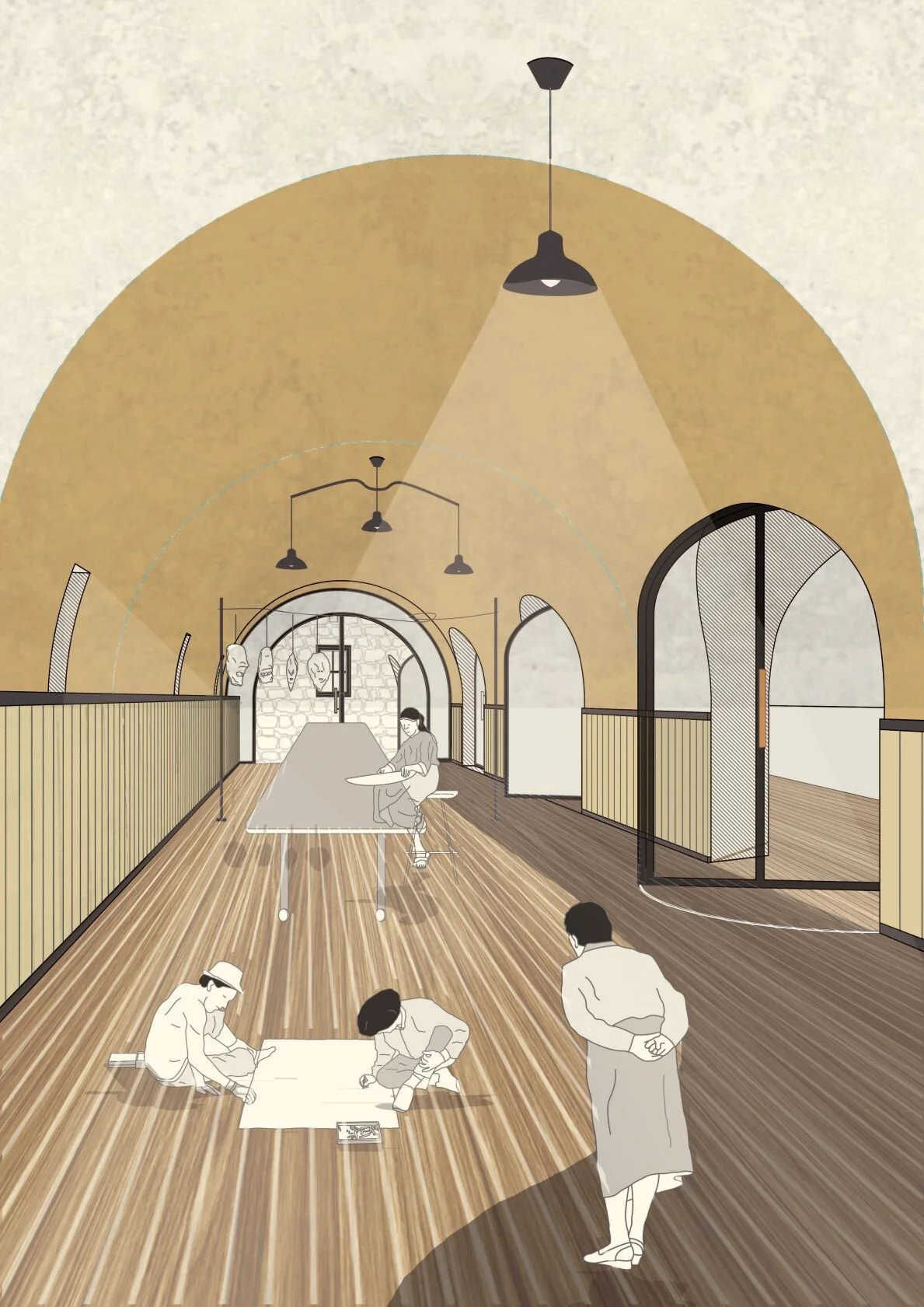Hereafter
To immortalize buildings, is to embrace their redundancy.
Adverb
“From here onwards”
Buildings, just like humans, experience the test of time, when they are reaching their end, death and demolition comes indefinitely. However we often have the desire to prolong death or try to reach out for the concept of “immortality”. Just like buildings, our desire, affection towards these historical buildings created an increase in heritage preservation practice where our heritage building life is beginning to become closer to the lifespan of our generation, flesh and blood.
Unfortunately, too often heritage sites either merely become physical shells of the new or relics to be sanctioned as “significant”, to simply “exist”. Yet, we have a tendency to put our building on life support, invading heritage sites with foreign programs that fail to forge a relationship with the past. Do these preservation methods truly extend the life of these buildings or mark the beginning of their death? Therefore, my thesis research aims to define the lifespan of Jack’s Magazine, and explore a method that embraces the lost of the old, in hope to create a transition of heritage building into the new.
The Journey
The journey begins on the elevated timber platform above the heritage canal that was once used as the entrance. It is a threshold between different versions of Jack’s Magazine. Slowly transitioning down into the river and foundation of the site, visitors can feel the weight and mass of their surrounds within the space, depicting a sense of loss.
Upon arrival, two vertical retaining walls define the entrance hall where visitors see and follow a long track that was once used for the transportation of gun powder. This pathway leads into the entry hall/chamber within the mounds, where visitors are met with two walls made using existing blue stone reflecting the new and old Jack’s Magazine storage building.
Exiting the long entry tunnel, the visitor arrives at the exhibition hall hosting a memorial of Jack’s Magazine and a living museum of the west. The existing pebbles are left on the middle stand, allowing visitors to take home a piece with them. The act of keeping the pebbles symbolise the responsibility of keeping and remembering the memory of Jack’s Magazine. Once the pebbles slowly disappear, it forms a new gathering spot for future generations and events.
Arriving at the end of the ramp, the visitor reaches the peak of the site where the garden and viewing platform showcase both the old and new Jack’s Magazine. In contrast to the tunnel, this provides a more open and light atmosphere, hinting towards a release from the past.
Exploring the second mound, visitors enter the second exhibition hall where they are met with a void that takes shape of Jack’s Magazine foundation. In addition to a symbol of memorialising Jack’s Magazine, the void has turned into a new opportunity, a new beginning; where landscape and an outdoor platform is inserted carefully into the space, hosting events and exhibitions. The mega-columns erected from the void, hold up the proposed ‘Jack’s Museum’.
Jack’s Place
Exploring the relationship between local built form heritage and the diaspora population in the 21st century.
This thesis explores the relationship between local built form heritage and the diaspora population in the 21st century.
The site, situated in the hidden jewel of Melbourne’s West – Jack’s magazine, is an example of a forgotten relic of Melbourne’s colonial past, is becoming increasingly disconnected from its current neighbours in Maribyrnong, in which more than 40% are immigrants. “Heritage is not given, it is made” (Harvey, 2001). In the case of Jack’s, with its previous use being a gunpowder storage in the 1800s to 1900s, is associated with the wealth and safety of Victoria as a state, it is not surprising that no action has been made to the building, with authorities still waiting and longing for a full-proof proposal to uphold fully the ideal nation-building narrative.
This thesis proposes new ways of heritage interventions which aims to reframe Jack’s as a reflection of the diversity of its currrent surrounds, as an amalgamation the past, with the present and future. The outcome is to create an all-inclusive civic node where local heritage and cultural heritage of the diaspora can co-exist, and crosspollination of cultures can occur. The injection of new energy into Jack’s aim to empower the diaspora instead of marginalising them, creating meaningful civic spaces which embody narratives of the past, present and future.













